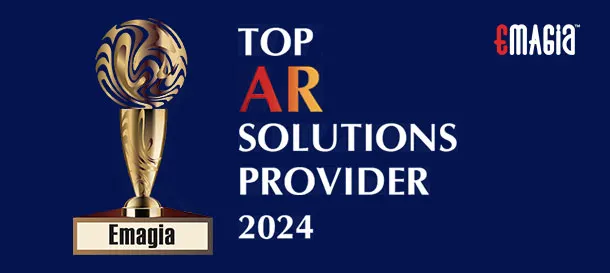Metrics tell you important information about your enterprise’s performance. There are several important metrics for accounts receivable (AR). One of them is the AR Turnover Ratio. Read this blog to understand what it means, how to calculate it, and how to improve it. Credit is a normal part of doing business. Companies extend credit to customers and expect to get paid within a specified time after shipping their products or delivering their services. Complexity underlies that simple concept, however. Rarely if ever, do all customers pay every creditor on time, so finance must keep an eye on accounts receivable turnover.
One way to do so is to review your accounts receivable turnover ratio. The AR turnover ratio effectively measures the effectiveness of your credit decisions and debt collection. The higher the rate, generally, the better. A high accounts receivable turnover rate demonstrates the efficiency of collections based on adequate credit vetting. In contrast, a low ratio indicates problems in collections and possibly weak credit policy or review.
The Accounts Receivable Turnover Formula
The AR turnover ratio tells you the number of times your average AR balance turns over in the period measured (typically a year)—how quickly you collect on accounts receivable. The formula is straightforward:
- Net Credit Sales (all annual credit sales, minus returns and allowances)
divided by:
- Average Accounts Receivable (add two Accounts Receivable totals, from the start and end of the year, and divide by 2 to get your average AR)
So Accounts Receivable Turnover = Net Credit Sales / AR Average
AR Average = [(beginning AR balance + ending AR balance) / 2]
To illustrate, supposed your company had net credit sales of 150 million last year. Accounts receivable at the start of the year was $25.5 million, and at the end of the year, $24.5 million. Your average AR, then, is $25 million. Plugging these numbers into the formula:
$150 million / $25 million = 6 AR Turnover Ratio
Converting the A/R Turnover Ration to Days
To get a quick grasp of the ratio, it helps to convert it to days. To do this, divide the number of days in the year by the AR turnover ratio to see the average time in days. Using the example above, conversion to days is:
365 / 6 = 60.8 days
So, an accounts receivable turnover ratio of 6 indicates, on average, you are turning over AR every 61 days.
The Meaning of the Accounts Receivable Turnover Ratio
The AR turnover ratio gives a company an idea of when accounts receivable will be paid and suggests the strength of the company’s credit and collections, though it can also point to problems such as product or fulfillment problems.
As noted, a higher turnover ratio is better; a lower ratio is indicative of problems with collection efficiency and possibly inadequate review of creditworthiness. For example, if your standard terms are 60 days in the example above, an AR ratio of six is excellent. However, if your standard terms are 15 days, an AR turnover ratio of six is poor.
Your own standard terms provide a baseline to interpret your ratio. And the AR turnover ratio varies by industry and business model. So comparative interpretation and benchmarking depends on the industry. Some industries demand swift turnover, such as fuel, shipping, and agriculture. Other sectors such as the financial industry have comparatively long payment terms.
High AR Turnover Ratio
The benefits of a high AR turnover ratio include receiving timely payments, increasing cash flow and enabling you to meet your obligations. In addition, it suggests that you are extending credit to a suitable customer base and that your collection methods are effective. When customers pay debts timely, you can open their credit and perhaps increase their limit for more sales.
Low AR Turnover Ratio
However, a low AR turnover ratio suggests you may be too lenient in granting credit and inefficient in collections, hurting your cash flow. Further, you are not extending credit to your slow and no-payers, nor are they likely in a position to buy.
The Receivables Tension
Of course, there is tension in granting credit and timely collection of money owed. If credit requirements are too strict, a very high percentage of customers may pay on time, but the strictness of credit means you are excluding potential customers and losing sales. On the other hand, if credit is too lax, not only will there be more late payments, but bad debt write-offs will increase.
A low AR turnover ratio might also point beyond credit and collections. For example, if your company has quality or shipping problems, it can also affect the accounts receivable turnover metric as unhappy customers delay or refuse payment.
Not a Stand-Alone Metric
A drawback of the metric is that it is general. It gives you only an indication of problems. It is not designed to tell you specifically what is wrong. Traditionally it has also been an annual metric.
So, it is also important to track other metrics such as DSO and others, which are measured more frequently. While DSO tells you different things, the combination of the metrics provides better guidance for finding and correcting problems and improving processes.
AR Turnover Ratio Summarized
The Accounts Receivable Turnover Ratio is a valuable general metric, quantifying a company’s effectiveness in collecting accounts receivable. It measures how well a company uses credit extended to customers and how quickly that debt is collected. The ratio is relative to industry and your terms, but companies efficient at collecting payments due will have a higher AR Turnover Ratio.
How to Improve AR Turnover
Today, intelligent, integrated, automated AR platforms, like Emagia’s, enable enterprises to substantially improve their performance reflected in key AR metrics. The combination of cognitive data capture, AI-supported APIs, a single data repository, AI-powered order-to-cash modules, advanced analytics, and digital assistant application to customers and internal users has achieved hyper-automation of AR and O2C process.
Sophisticated analytics accurately show what is happening, what will happen based on the past, and what could happen under different scenarios. Compelling visualizations and reporting show not only general performance but drill down to pinpoint areas for attention. To see how Emagia’s AR Order-to-Cash automation platform can help you achieve true AR and O2C automation, contact us.
How Emagia Enhances Your Accounts Receivable Turnover Ratio
Emagia’s platform is designed to streamline and enhance your AR processes, directly impacting your AR turnover ratio. Here’s how:
- Automated Credit Risk Management: By leveraging AI, Emagia assesses customer creditworthiness in real-time, enabling informed decisions that minimize the risk of bad debts and improve the quality of your receivables.
- Efficient Receivables Processing: The platform automates invoicing and payment processing, reducing manual errors and accelerating the collection cycle, thereby increasing your AR turnover ratio.
- Proactive Collections Management: Emagia’s intelligent collections module prioritizes accounts based on risk and payment behavior, facilitating timely follow-ups and reducing overdue receivables.
- Advanced Analytics and Reporting: With comprehensive analytics, Emagia provides insights into your AR performance, helping you identify trends and areas for improvement to maintain a healthy turnover ratio.
By integrating Emagia into your financial operations, you can achieve a more efficient and effective AR management process, leading to improved liquidity and financial stability.
Frequently Asked Questions (FAQs)
What is a good Accounts Receivable Turnover Ratio?
A higher AR turnover ratio indicates efficient collection processes and effective credit policies. However, what is considered “good” can vary by industry. It’s essential to compare your ratio with industry benchmarks to make an accurate assessment.
How do you calculate the Accounts Receivable Turnover Ratio?
The AR turnover ratio is calculated by dividing net credit sales by the average accounts receivable during a specific period. This formula measures how many times your receivables are collected within that timeframe.
What does a low Accounts Receivable Turnover Ratio indicate?
A low ratio may suggest inefficiencies in your collection processes, lenient credit policies, or issues with customer creditworthiness. It indicates that your company may take longer to collect payments, which can impact cash flow.
How can I improve my Accounts Receivable Turnover Ratio?
Improving your AR turnover ratio can be achieved by tightening credit policies, enhancing collection processes, offering early payment incentives, and regularly reviewing customer creditworthiness. Implementing automation solutions like Emagia can also significantly enhance efficiency.
Why is the Accounts Receivable Turnover Ratio important?
This ratio provides insights into how effectively a company manages credit sales and collections. A higher ratio reflects efficient credit and collection processes, contributing to better cash flow and financial health.
By leveraging Emagia’s advanced O2C automation platform, businesses can optimize their AR processes, leading to an improved AR turnover ratio and overall financial performance.




